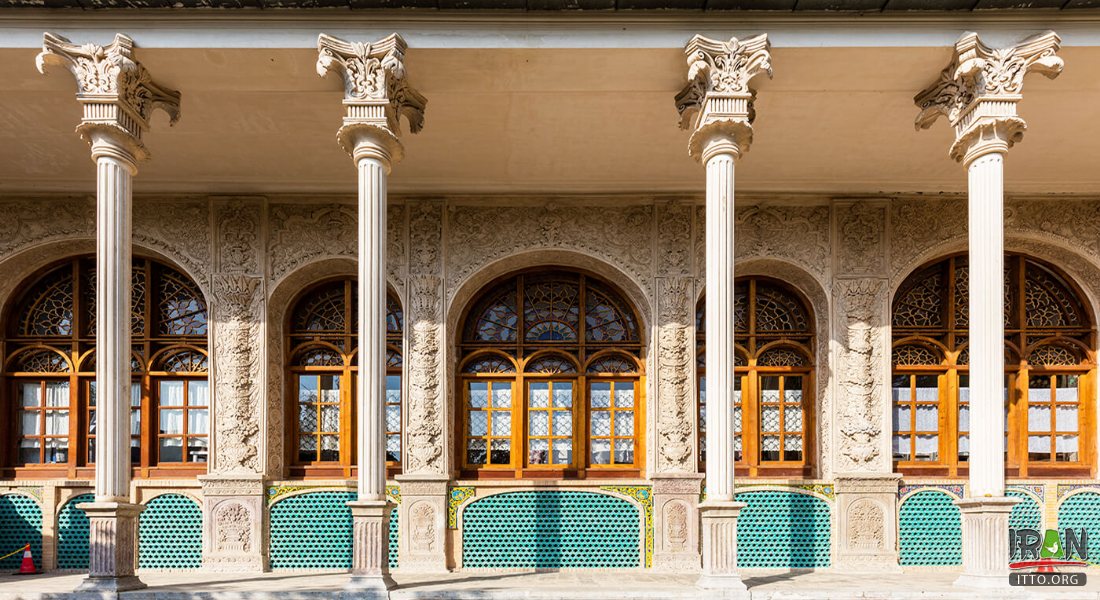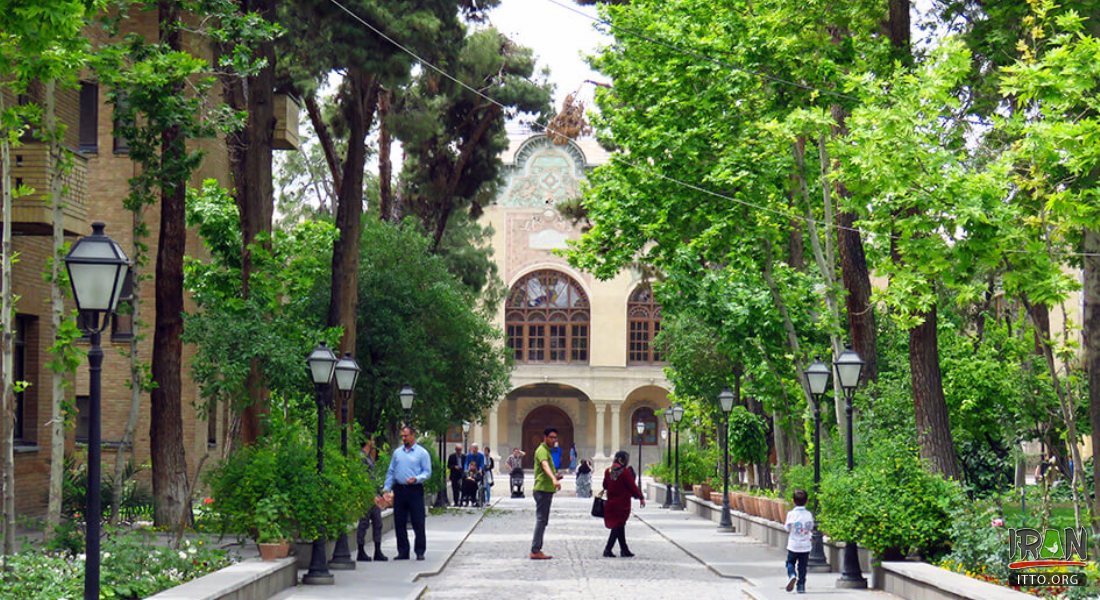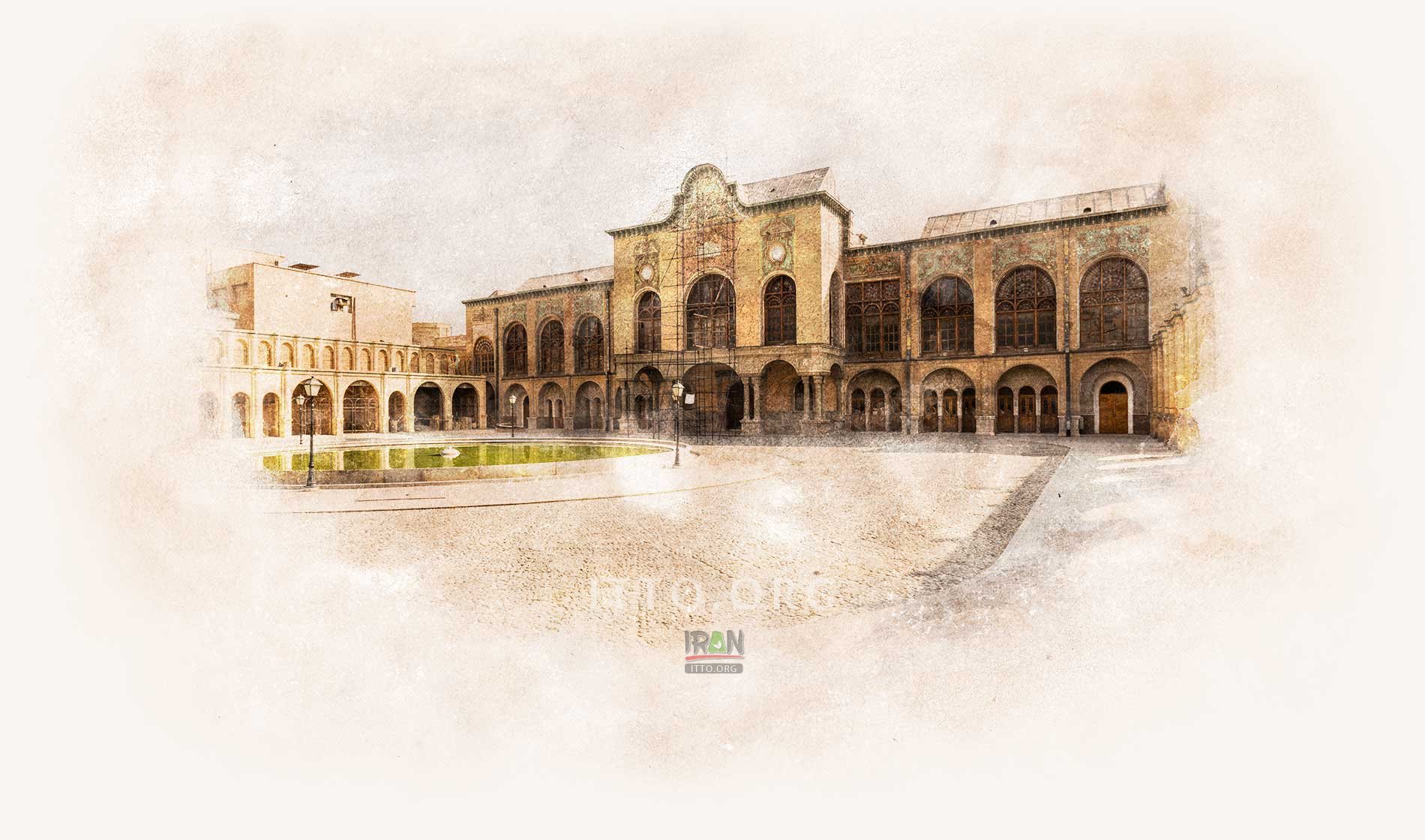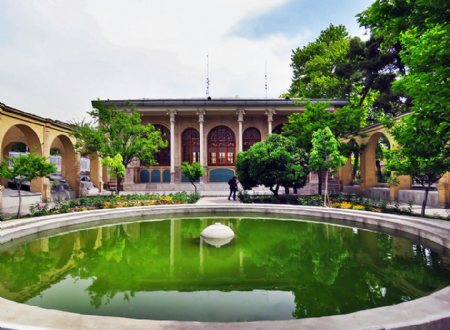Masoudieh Palace (Emarat-Masoudieh complex) stands on Jomhuri street, near Baharestan Square, south Tehran. Built in 1879 for Naser al-Din Shah's son, Masoud Mirza, who was also the governor of Esfahan (Isfahan), as his residence in Tehran, this lovely building and garden is in the process of restoration.
The palace embodies the modern history of Tehran, from the time when Mohammad-Ali Shah’s coach was bombed in front of the building, providing him with an excuse to deploy cannons and shell the parliament. The palace was then fusilladed, for it was one of the main gathering places for the constitutional revolutionaries.

Masoudieh Palace is composed of two parts, “Andarooni” (the private, interior or privacy zone) such as palaces and buildings and “Birooni” (the public, exterior or common area) such as gardens and courtyards.
After the death of his owner, his descendants used the building for different purposes. In 1926, it hosted first official library, which later escalated to National Library.
Several years later another hall of the palace became the first Iranian museum. A collection of antiques later was moved to the newly launched National museum, but some of them are still in Masoudieh Palace. In 1967, the palace became a home for Ministry of Education. After receiving Cultural Heritage status in 1977 and renovation works, the complex turned into a nice garden with shops and cafes.
This beautiful palace takes place in the middle of the 50,000 sq.m. garden. Beside the main palace, there is also a forum, restaurant, spring house, Seyed Javadi Mansion, Moshir al-Molk Mansion and entrance hall.

The palace embodies the modern history of Tehran, from the time when Mohammad-Ali Shah’s coach was bombed in front of the building, providing him with an excuse to deploy cannons and shell the parliament. The palace was then fusilladed, for it was one of the main gathering places for the constitutional revolutionaries.
The architecture of the palace clearly shows the influence of European architecture. Shah actively traveled abroad, and more and more Iranian students were going to study in Europe. The first construction that visitors can see entering the complex, is Divankhaneh Palace (Kakh-e Divan-Khaneh).
This building represents transparency, lightness, and openness – new principles of Iranian architecture. Gridded windows provide enough amount of fresh air and sunlight into the rooms, and natural patterns, floral forms, and landscape ornaments bring in a fresh, European-style image of the palace. That makes Masoudieh Palace a prominent example of Qajar architecture.
Masoudieh Mansion (Emarat-e Masoodieh) is located in the center of Tehran, in a couple of minutes walking from Mellat Metro Station. You can use the advantage of central location and also visit Negarestan Garden, National Jewelry museum, Ebrat Museum and Bagh-e Melli since they are located within walking distance of Masoudieh Palace. Two metro stations to the south, you will find the old city, Bazaar and Golestan Palace.





